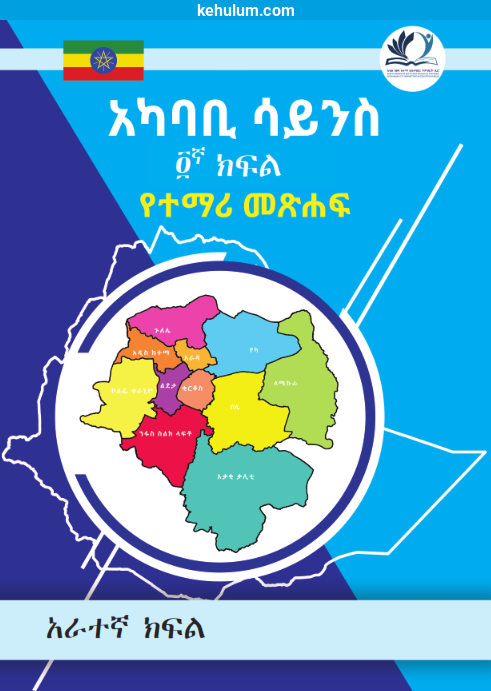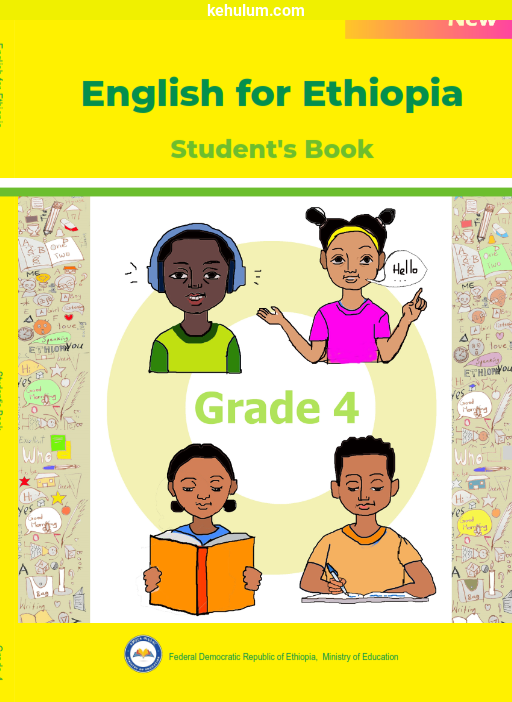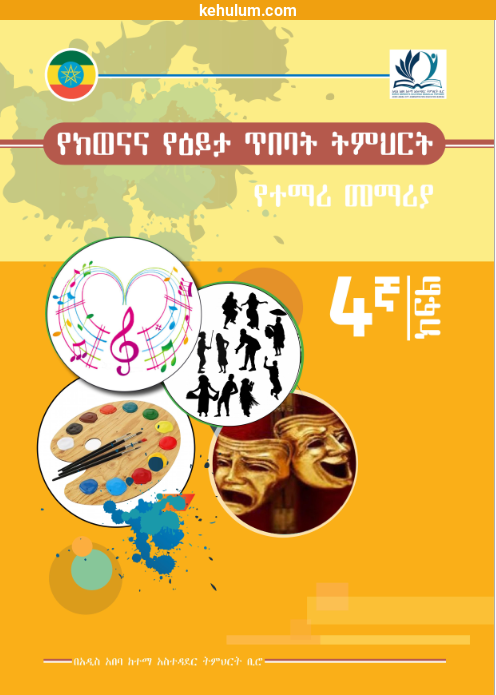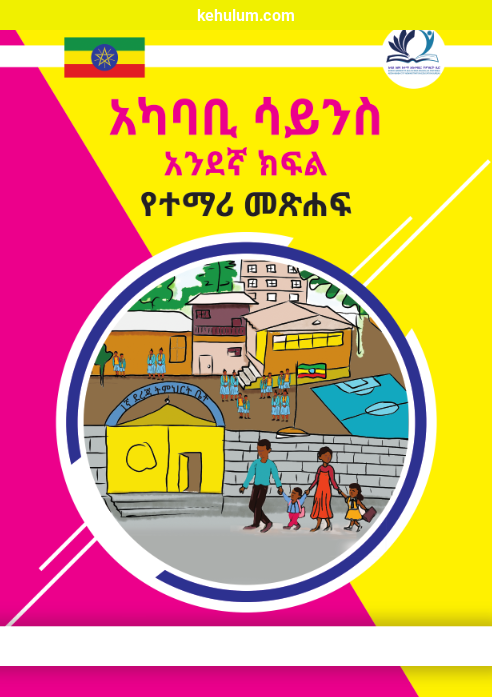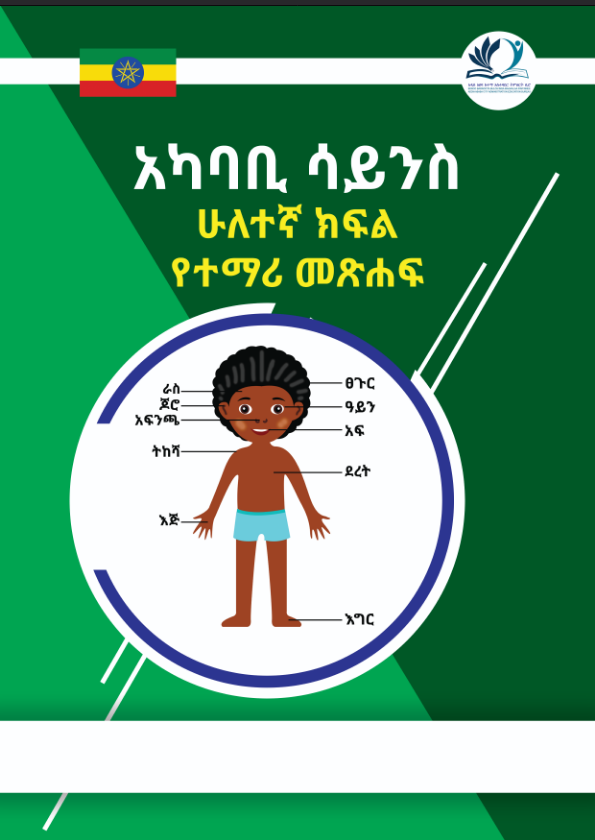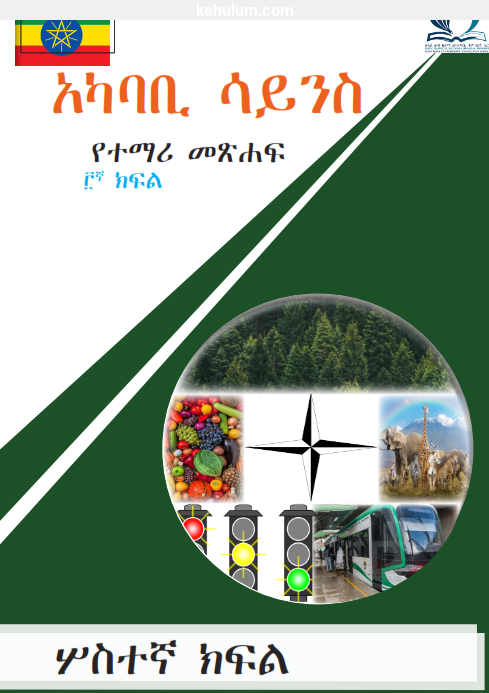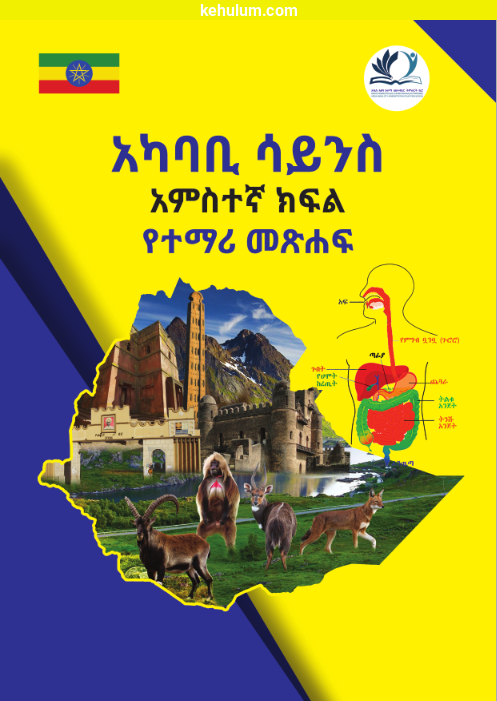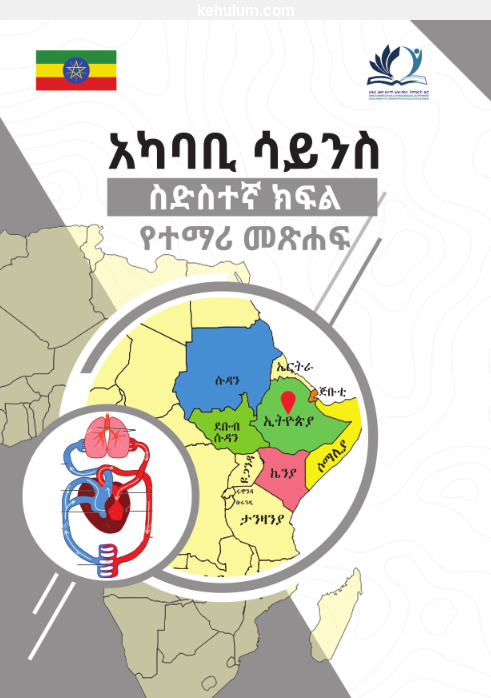The Grade 4 Environmental Science Student Textbook is developed under Ethiopia’s new curriculum to strengthen students’ understanding of their natural and social environment. It connects science, geography, and civic life, encouraging learners to observe, question, and solve real-world environmental issues within their community.
Grade 4 Environmental Science Student Textbook 5 chapters. Each chapter promotes critical thinking, practical investigation, and citizenship responsibility through active, learner-centered lessons. They are:-
- ምዕራፍ 1: የከተማችን መገኛ (The Location of Our City)
- ምዕራፍ 2: ሳይንስን መገንዘብ (Understanding Science)
- ምዕራፍ 3: ተፈጥሮአዊ አካባቢ (Natural Environment)
- ምዕራፍ 4: ማህበራዊ አካባቢ (Social Environment)
- ምዕራፍ 5: ድንበር ተሻጋሪ ጉዳዮች (Transboundary Issues)
Chapters Overview
Chapter 1: የከተማችን መገኛ (The Location of Our City)
Students learn basic mapping skills, including directions, distance, latitude, longitude, and relative and absolute location. They identify major landmarks and boundary regions of their city using maps and information technology.
Chapter 2: ሳይንስን መገንዘብ (Understanding Science)
This chapter introduces healthy living, nutrition, human anatomy, and matter. Students learn about food groups, balanced diets, internal organs, and physical vs. chemical changes. They also explore light and shadow through observation.
Chapter 3: ተፈጥሮአዊ አካባቢ (Natural Environment)
Students study the weather, climate, and natural resources of their city. They collect and interpret weather data, understand factors that affect climate, and explore resource conservation and waste management.
Chapter 4: ማህበራዊ አካባቢ (Social Environment)
This chapter explores how culture, economy, and environment interact. Students learn about diverse cultures, sustainable traditional practices, economic activities, trade in natural resources, transportation, and heritage sites.
Chapter 5: ድንበር ተሻጋሪ ጉዳዮች (Transboundary Issues)
Students study broader environmental and health challenges such as HIV/AIDS awareness, chemical safety, misuse of medicine, drought, and famine. They identify causes, effects, and coping strategies for drought using maps and data.

